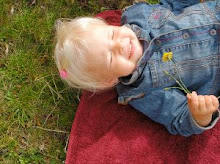It's true they are astonishing, even if many of them look like they have arrived fron another planet or they have been sired by Kojak. At no other time in our life do we soak up so much infomation or learn so many useful skills
Saturday, 27 September 2008
No microwaves please, we're babies
Monday, 22 September 2008
Is tap water ok ?
The truth is that unless you live in an area where there is a problem with the drinking water supply or your midwife tells you to there is no need to even boil the water.
Many mums in the early months do boil the water and then mix it with the formula when its cooled our tip is to save money boil enough for the whole days feeds and keep it in the fridge then its ready when the screaming begins and you don't have to wait for it to boil and cool when its needed now. If you warm your milk and there is no need to if your baby will take it cold, remember not to put it in the microwave as it can cause hot spot as and destroy the nutrients
Wednesday, 17 September 2008
Is boiling bottles enough?
Process
Before using bottles, nipples, and rings, you should submerge them in a pot of boiling water for at least five minutes. Then allow them to dry on a clean towel. After that, a good cleaning in hot, soapy water or a cycle through the dishwasher should be enough. The choice of how to clean them is yours it is just important that they are cleaned thoroughly.
Sunday, 7 September 2008
How often should I bottle feed?

Until the baby reaches about 10 pounds, they will probably take one to three ounces per feeding. Try not to force more than they are ready to eat. Your mid wife should advise you about suitable amounts for your baby as they grow.
Tuesday, 2 September 2008
How often should I breast feed?
If you choose to feed on demand there are signs to pick up on before they start cry with hunger. Look out for them;
- putting a finger in the mouth,
- Turning the head from side to side looking for the breast.
- Try to find a breast when they are being held
- Trying to feed on other woman’s breasts
You will soon see the signs and get to know your own baby and manage to avoid the tears. It can be very tiring to feed on demand many women say they know how a cow feels but some people feel it is beneficial as it keeps milk supplies strong.
Not matter how often you choose to feed the key to being able to have a life and not feel that you are purely a milk making machine is to express. Expressing milk and storing it in the fridge for some one else to feed can help to alleviate this feeling and allow you the freedom to get on with other things in you life. Expressing the milk will allow you to leave the baby either to go out or to go back to work, it can give your partner time with your child and more than any thing it can give you some sleep occasionally while some one else takes on the night feeds.
Wednesday, 27 August 2008
Tips on breast feeding
It's important for both of you to be relaxed and comfortable, that is sometimes easier said than done but you may be feeding for an hour or so, make sure you at least have a pillow under your arm to help support the baby. A baby may not yet know how to open their mouth quite wide enough, if this happens, you can squeeze out a little milk from your breast, open baby's mouth with your clean finger, and put a little milk in to start baby off. Wait for the baby's mouth to open, then guides the breast in - not just the nipple. To suck properly, the baby squeezes the area behind the nipple with his or her whole mouth. When the baby finishes sucking the first breast, put your finger into the baby's mouth to release the sucking, and then offer the other breast. And next feed, start the other way round. When the baby has had enough, he or she will just usually fall asleep. It is important to use both breast equally as the child’s sucking stimulate the milk production. Each time you feed, you should stay on one breast until it feels empty that is usually at least ten to fifteen minutes. The main reason for this is that it is thought that the milk that comes at the end of a feed is much richer and more satisfying than what come at the start.
If your nipples get sore you can use ice to cool them, or a bag of frozen peas, there are products on the market that are safe to use for cracked and sore nipples during breast feeding but be sure to read the label before you use it you don’t want to poison the little mite!





